The communications system on board Luna Rossa
During a race, communications on board must be clear and free of any interference. With a meticulous research process the team produced a system designed to be efficient in the most extreme conditions.
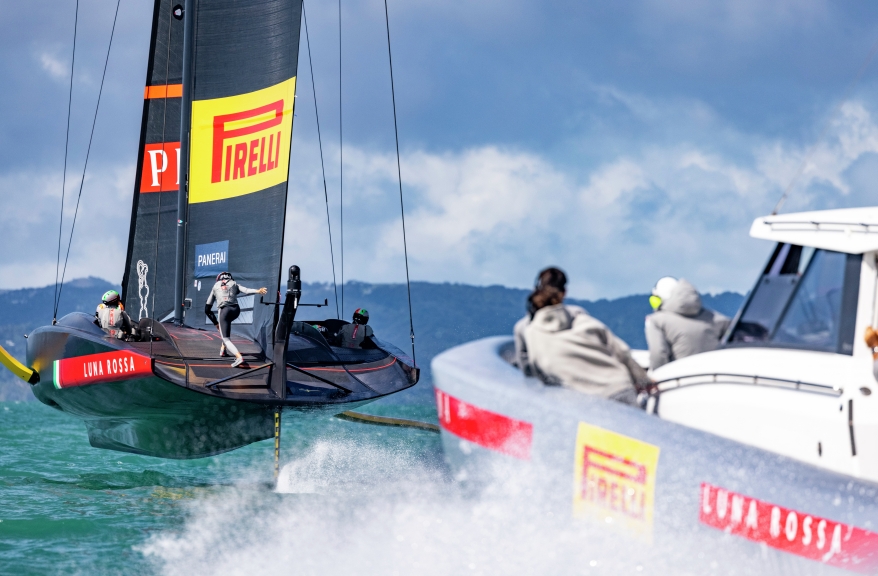
When flying at 50 knots speed, communications on a boat like the AC75 are not that simple. The feeling is comparable to that of a motorcycle traveling at 100 km/h. Wind, noises and vibrations from the hull and rig are all elements that disturb the communication flow. The position of the crew members in the boat also makes hands-free communication challenging.
On Luna Rossa, the only sailor who can move from one side of the boat to the other during navigation, passing on the stern, is mainsail trimmer and strategist Pietro Sibello. Both Jimmy Spithill and Checco Bruni, in their alternating roles of helmsmen and flight controllers, do not move from their positions, nor do the other eight sailors. The crew is positioned in two "corridors", separated by the soft wing that creates a longitudinal barrier between the two sides of the hull and prevents the crew on one side from seeing what happens during the manoeuvres on the opposite side. The distance between the first man at bow and the last one at the stern is about 15 meters, a condition that makes it virtually impossible to communicate without specific aids. All manoeuvres are called and executed in a matter of seconds, so it is essential that each crew member receives clear and precise information simultaneously.
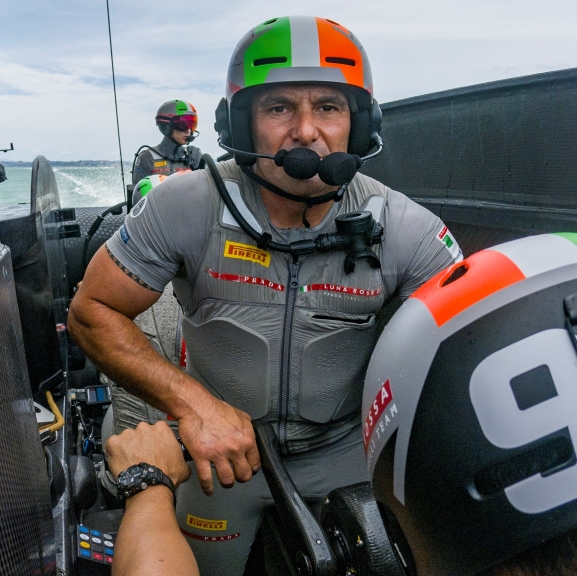
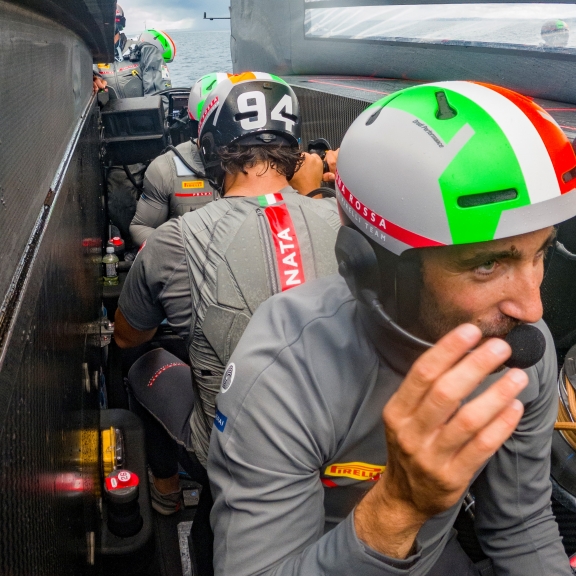
For this reason it has been necessary to develop an advanced intercom system for on-board communication on the AC75 and with the support boats.
The system is positioned in the helmets of each sailor that are fitted with sophisticated microphones and earphones. The crew interacts within the boat and with the support fleet on single radio channel. Everyone onboard can listen, but only a select few can use the microphone. The helmsmen, the mainsail / strategist and jib trimmers, who need to exchange information on handling, sail trimming and the racecourse conditions are enabled to communicate verbally. Gilberto Nobili is also enabled for this function, as he provides the afterguard with the information displayed on the racing software, such as the approach times to the starting line and to the laylines.
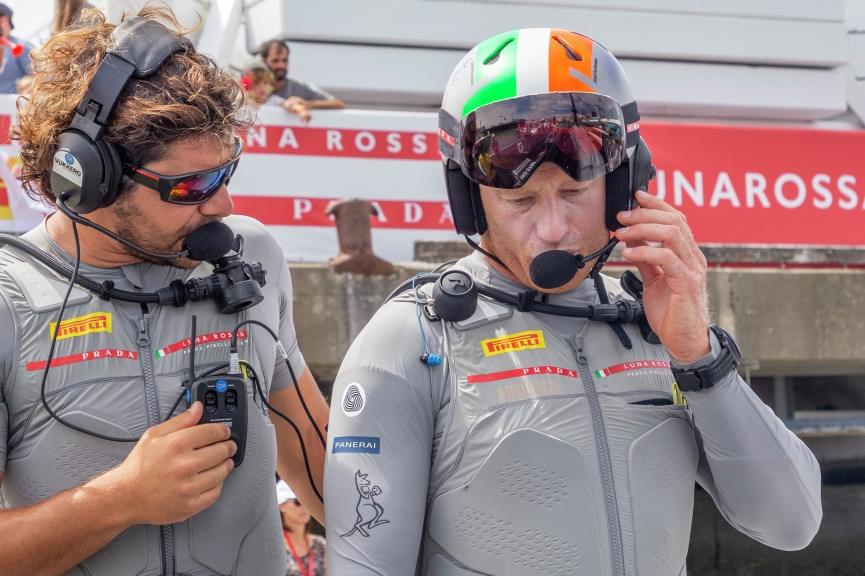
During training and sea trials, the team members on the support boats can communicate with the sailing team. In particular, the coach, technicians and engineers monitoring the data of the sensors mounted on the AC75 listen to the comments from the sailors through their headphones and interact continuously with them. During the regattas, the rule prohibits any kind of external assistance, so intercoms of the support boats are disabled a few minutes before the start until the end of the race, and the team support assumes a "listen-only" mode. All boats competing can only communicate with the Race Director for information related to the race and with the Umpires, the judges who supervise the regatta, to acknowledge the protests and assign penalties. On Luna Rossa, Checco Bruni and Jimmy Spithill are the crew members who interact with the organization.
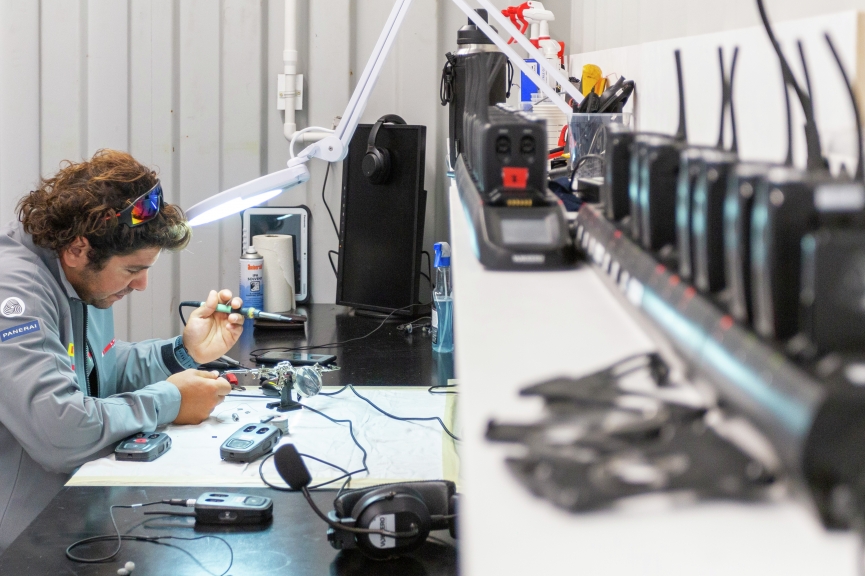
As for all elements of the AC75, the communications system also required a lengthy and complex process of analysis, design, development and implementation. These are delicate components that need to function properly in an environment subject to deterioration as it is in contact with the corrosive saline properties of sea water. Features such as lightness and wearability, combined with the need for an efficient instrument even in extreme conditions, have made the design of these instruments even more challenging. The development of the hardware took over three years of work and numerous devices were tested: microphones, cables, connectors, earphones, speakers. The goal was to capture and distribute a clear sound, free of any external interference tied to the wind, turning winches, movement of foils, and all the sounds that are heard when flying at maximum speed on a carbon monohull.
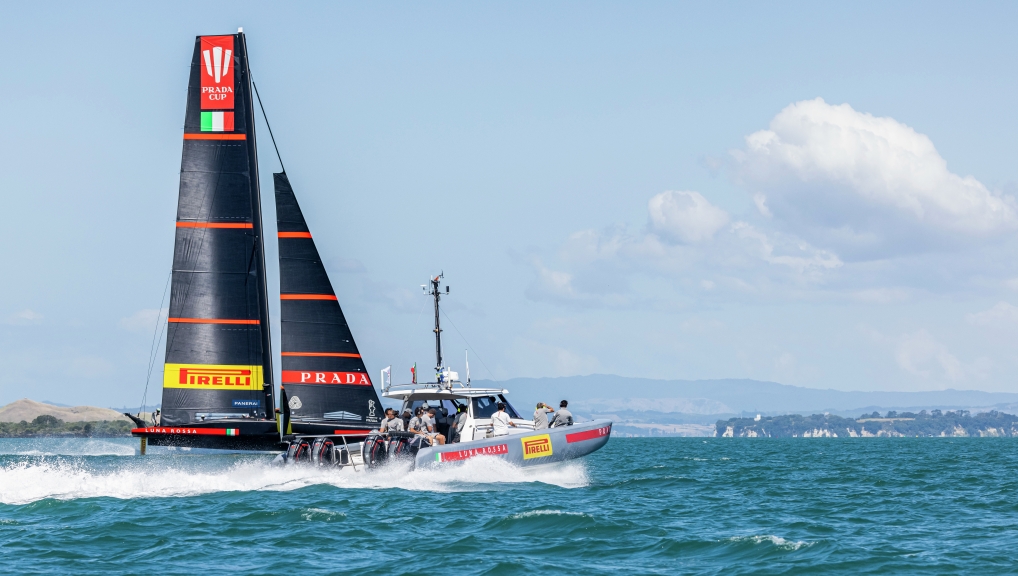
The final product was a hardware device with excellent performance, where several elements were assembled and integrated into the helmet. The comms system was designed to be encased in a custom-built ergonomic slot, with specific comfort and aerodynamic characteristics, to be an integral part of the helmet used by the sailors. Both the design and the production of the custom-made “case” were conducted in-house at the base with the aid of the team’s 3D printer.
Like all the components that make up an AC75, meticulous research has also been carried out on the communication system to reach quality standards of the highest level. The ability to communicate on board in a clear and clean way is essential to achieve racing results.